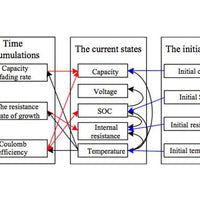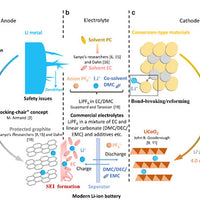What to consider when selecting a solar storage solution?
We talk about batteries as an energy storage device, but batteries also need to provide enough power for your application.
So you’re excited about solar and have finally selected your solar panel kit. If you’re in an RV or van, you’ll need a way to store that energy produced from your panels. If you’re going solar at home, maybe you’re interested in going off-grid and utilizing battery storage. There’s a lot to take into consideration when deciding on a solar storage solution. Let’s break it down for you.
The first thing to do when sizing your battery bank is to take an inventory of everything you need your batteries to power and determine your total energy requirement.
How do solar batteries work?
Solar batteries store the energy that is collected from your solar panels. The higher your battery’s capacity, the more solar energy it can store. To use batteries as part of your solar installation, you need solar panels, a charge controller, and an inverter.
Your solar panels will first need to be connected to a charge controller which will help monitor how much energy is stored in the batteries to prevent overcharging. Charge controllers will also shut down a system if the batteries become too depleted. Before being power your appliances, your batteries will need to be connected to an inverter to convert the DC energy collected from solar panels and converted to AC energy.
When using batteries for solar panels as part of a home solar system, you’re able to store the excess electricity your panels produce instead of sending that energy back into the grid. Electricity will be sent to the grid if your batteries are fully charged and your panels are still producing energy.
Every electronic device will indicate the electrical load it draws, on its label or its packaging. This load will be provided either in amps or watts. If it provides amps, estimate – in hours – how long this device will be used each day and multiply it by the current in amps. This will give you a daily amp-hour requirement. If it lists watts, simply divide by the voltage to get the current in amps. Again, estimate – in hours – how long it will be on each day and multiply it by the current in amps. Now you have the amp-hours for each device. Add them all up and you’ll have your daily energy load. This will determine how much battery capacity you need.
The second step is to determine the maximum power requirement. This can be done in amps or watts. Since you already determined the amps in the first step, you already have all the information you need. Determine the maximum current needed by adding up all the potential current draws that may take place at the same time. Now you know the current requirements of your battery.
Regardless of what battery you buy, you need to be able to recharge them. If your recharging power source (for example, charger, solar panels, etc.) cannot meet your daily demands, you need to reduce your loads or augment your recharging power. Otherwise, your battery bank won’t get fully-charged and you will reduce the available capacity for the subsequent discharge.
What should I consider when deciding on a battery for my solar panels?
When shopping for batteries for your solar installation, there are some different factors to consider: price, capacity, voltage, and cycle life.
Price: Batteries can vary from around $100 for the cheapest lead acid battery to more than $1,500 for a lithium-ion battery. Be sure to consider the ultimate lifetime and not just upfront costs, as you will have to replace lead-acid batteries before you will need to replace a lithium-iron battery. You’ll also need to do more maintenance on a flooded lead-acid battery, and we all know time means money.
Capacity: Battery capacity is important because it measures the amount of energy you can store. If you need to power certain appliances for long periods, you’ll need more batteries to carry a bigger load. Capacity is measured in total amp-hours.
Voltage: Be sure to check the voltage of the battery bank to ensure it is compatible with your panels and the rest of the system, particularly your solar panels. Panels typically come in either 12V and 24V options. Most RV’s and boats typically use 12V battery banks, so people usually stick with the 12V panels. The advantage of using a higher voltage battery bank is that it saves you money in the long run as you need fewer charge controllers and can use thinner cables for the same amount of power. If your energy needs are over 3KW, go for a 48-volt system. Large off-grid houses often use 48V.
Cycle Life: This specifies the number of discharge and charge cycles a battery can provide before the capacity drops below the rated capacity. This varies sharply from technology to technology and is measured in the number of cycles.








0 comments